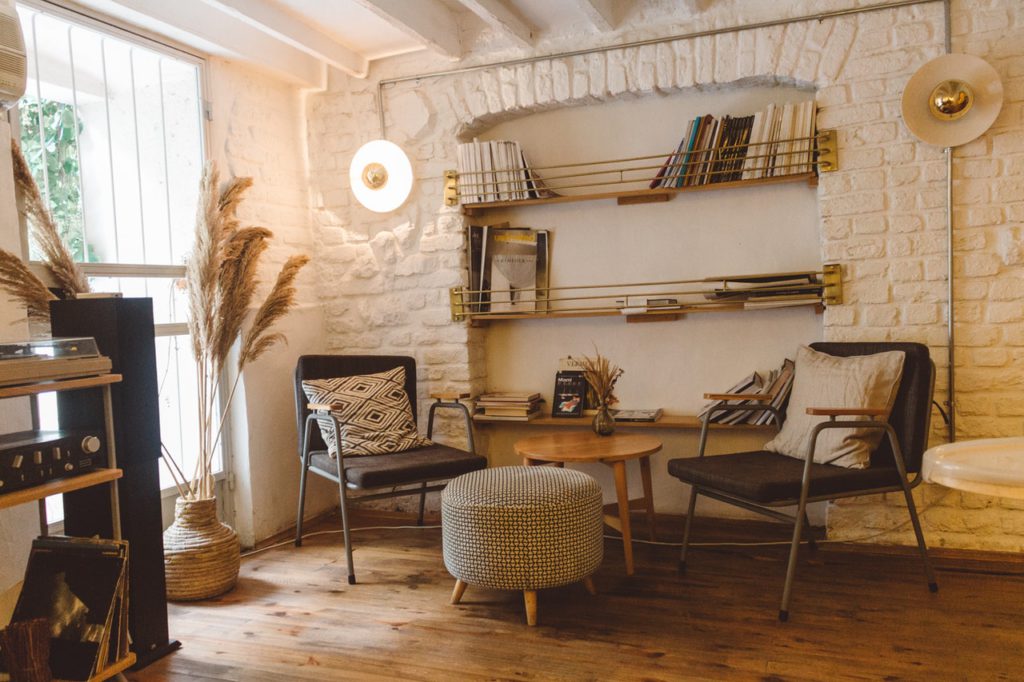The Dos and Dont’s of DIY furniture

Whether you’re building a piece from scratch or simply giving it a new lease on life, a DIY project can really personalise your furniture choices. If you’re not a professional carpenter or worry you don’t own any of the fancy power tools you see in the DIY videos in your Facebook feed – don’t fret, there are plenty of ways you can ensure your project doesn’t turn into a disaster!
If you’re starting your piece from scratch the first thing you should always DO is make a plan. Pretty much all dos and don’ts are in some way related to planning, but having a grand plan is always a great place to start. Winging it might seem like a fun and creative way to go about it, but more often than not, it will result in an end piece that isn’t what you had in mind. Planning may seem laborious, but if you don’t have measurements and materials all considered you might find that your piece doesn’t only look bad, it’s not functional or doesn’t fit into the space you had in mind. If you’re going to take on a from-scratch build, it’s a big do for planning.
When building furniture yourself, it is a big DON’T for making do with equipment you already have (unless of course you have everything you’re going to need). Being able to use what you have lying around or upcycling a broken-beyond-repair piece is an awesome way to be sustainable, but making do with blunt or subpar tools is only going to make your job that much harder and your work that much messier. Not to mention the safety implications. Safety first is a great rule to live by when you’re trying out your DIY building skills as a beginner. Make sure you do some research for safety suggestions. This might simply be reaching out to a professional you already know or doing a bit of googling and watching a few YouTube videos.
If you’re idea of DIY is more of a revamping of an existing piece of furniture you may still encounter a number of hiccups. Hopefully by keeping these Dos and Don’ts in mind you might just be able to avoid them. If all else fails, there are many affordable chairs on sale to purchase, or second hand tables. You may even find quality chairs with back support, or a vintage looking sofa. Nevertheless, DIY’ing can be much more rewarding if you are up to the challenge.
DO fill in any imperfections before you make any changes. This may mean using a putty or a caulk to fill in some deep cracks or imperfections. It might be that your piece used to be a classic gloss finish furniture piece that needs a good sand back to make it even. Whatever the tidy up that is required, starting with a clear canvas will always make your project smoother.

DON’T skimp on the brushes you use. The quality of your finished piece will rely heavily on the aesthetic of your final coat. Whether you’re going for a colourful paint, a classic white or a French polish furniture restoration look, it matters the quality of your brush. Using an old one may be fine, if the bristles are still intact and it hasn’t begun to deteriorate but it is also important to make sure you are using the right style of brush. When you look to buy brushes, it may be wise to ask for some recommendations from a worker in the shop. Different thickness and texture of brushes are better for different materials. Do yourself and your final look a favour, and splurge on a decent brush.
DO carefully consider the materials you are going to be working with. While most furniture is made from wood and that is pretty straight forward for the most part, if you want to branch out to something like wire furniture or say something made of cast iron, make sure you know what’s required for any wire work. Again, this might mean doing some googling and watching a few YouTube videos, it doesn’t need to be a structured course. But some materials will be more temperamental than others and you don’t want to ruin your beautiful project because you didn’t know your stuff.
DON’T bite off more than you can chew. This means knowing how much time you actually want or have to spend on your project. Nothing is more disheartening when you’re expecting something to be finished and it just keeps lagging on. For instance, if you’re going to reupholster an old armchair, make sure you’re aware of how much time, effort and materials you’re going to require. You might find that having a reasonable idea of how long a project is going to take will make the work that much more manageable.
DO be sure to seal in all your hard work with the appropriate protective sealant. This will depend heavily on what kind of materials you’re working with, and also where you intend to install your finished product. For instance, if you think you might want to use your finished piece in a garden or other outdoor setting, you should be sure to finish it with a product that will protect it from the weather. This is still necessary if you plan to keep it under cover or in an enclosed space as dampness from rain is not the only thing that could deteriorate your work. Ensuring you do this step correctly will guarantee a much longer life and much less upkeep for you.
DON’T be afraid to make mistakes. This one is extremely important. Far too often when we take on a project we’ve never done before, we worry so much about doing it wrong, or messing up that we never get started. The beauty of DIY is that there is no wrong way to do it. As long as you prepare as much as you can, you can’t let the illusion of perfection get in the way of your enjoyment in your craft. Plus, if you do mess it up, there are always ways to fix it. And who knows, you may find that in your mistakes, you discover a better way to do things or a spark of inspiration as to how you might do things better. Any at home project is always going to be a learning curve, don’t let your fear of failure be the reason you don’t even try.








